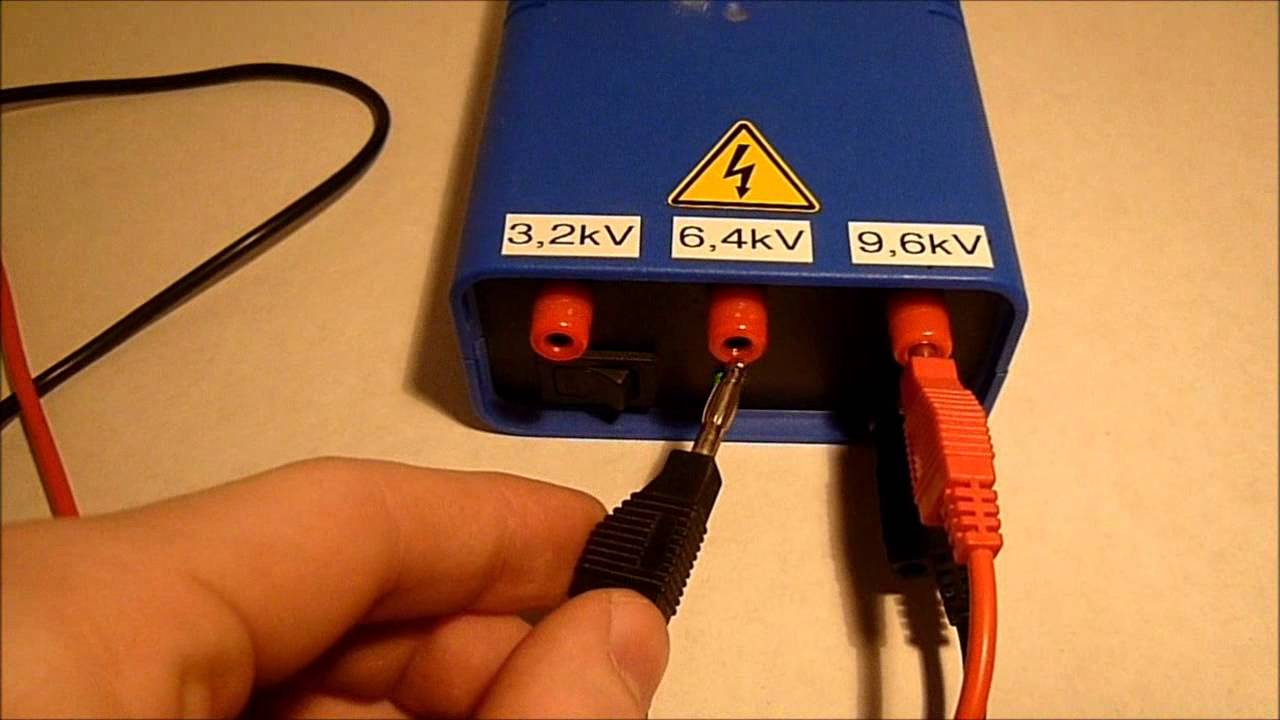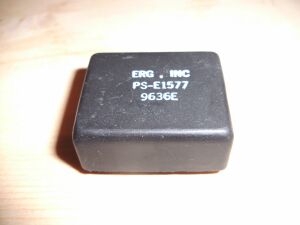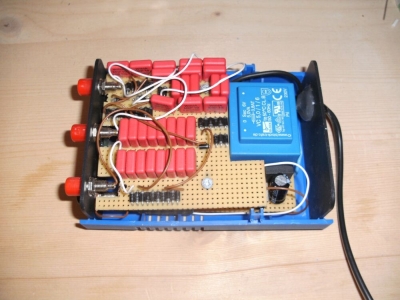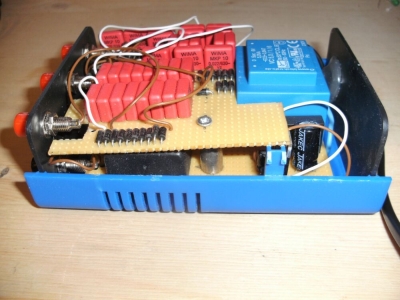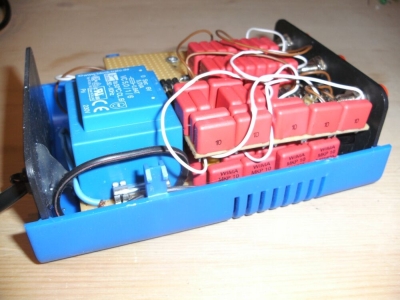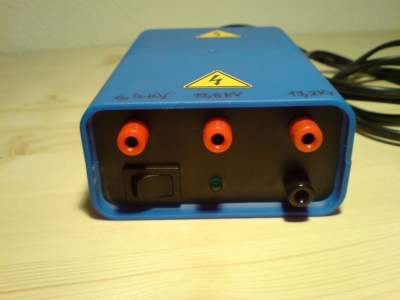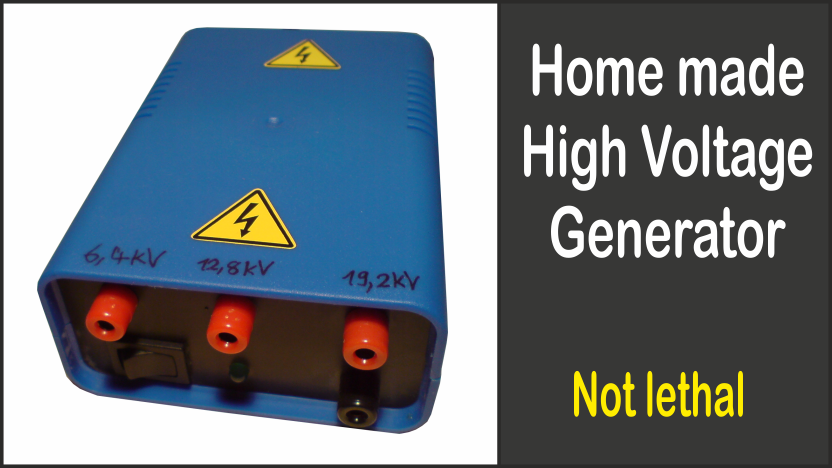
The reason for this project was the fact that I had to create a static electrical DC field. For this I needed a high DC voltage (my aim was about 10 kV). But why not just buy a high-voltage transformer? The problem was that it shouldn't be lethal if you touch the contacts.
Table of contents
Video
The following video shows the high voltage generator even better:
General information
Principle: voltage multiplier
After googling for a while, I finally stumbled on the principle of a voltage multiplier. With such a circuit you can generate a high DC voltage from an AC voltage. The problem with the voltage multiplier is, that I needed a relatively high input voltage for 10 kV. But luckily I stumbled across this great thing:
The module is originally designed for controlling display backlighting (cold-cathode lighting), but it is also excellent for the control of the voltage multiplier. It is completely sealed and operates starting an input voltage of 2.5 VDC. At an input voltage of 5 VDC (570 mA) it generates an AC voltage of approximately 1600 V (peak) at a frequency of 30 kHz (module name: E1577; size: 39 mm x 32 mm x 15 mm).
Circuit / circuit diagram
To create 10 kV, I needed a 3-stage voltage multiplier. For the capacitors I used "MKP-10-630 22nF" from WIMA and connected always 8 of them in series.
For the diodes I used BA 159 and connected always 10 of them in series. I don't know why I overdimensioned this so much at this time, because less capacitors and diodes in series would also be sufficient. But I always say: the more, the better.
Therefore my project was almost finished (at least with the planning). That I can connect the high voltage generator to the sockets, I also included a transformer with a rectifier and a voltage regulator and the result was a relatively simple circuit (with lots of diodes and capacitors).
Here you can download the circuit diagram in PDF format: Circuit diagram: high voltage generator.
Construction
All the components then were soldered onto a breadboard and built into a stylish casing. Unfortunately, I can't show you more detailed pictures because at that time I didn't document my projects and so I would have to disassemble the whole device. But as you can see, the layout is not so great anyway.
Three taps were mounted, so that three different voltages are available (3.2 kV, 6.4 kV and 9.6 kV).
Final high voltage generator
Here you can see the final high voltage generator:
Here I must say that the labeling isn't correct. Of course it is only the half voltage. More precisely, the voltage in reality is even slightly lower (by losses of the diodes, capacitors,...), but I have no instrument for such high voltages, so I don't know the exact voltages.
Startup
Pictures
As you can see in the pictures, the high voltage generator works fine:

